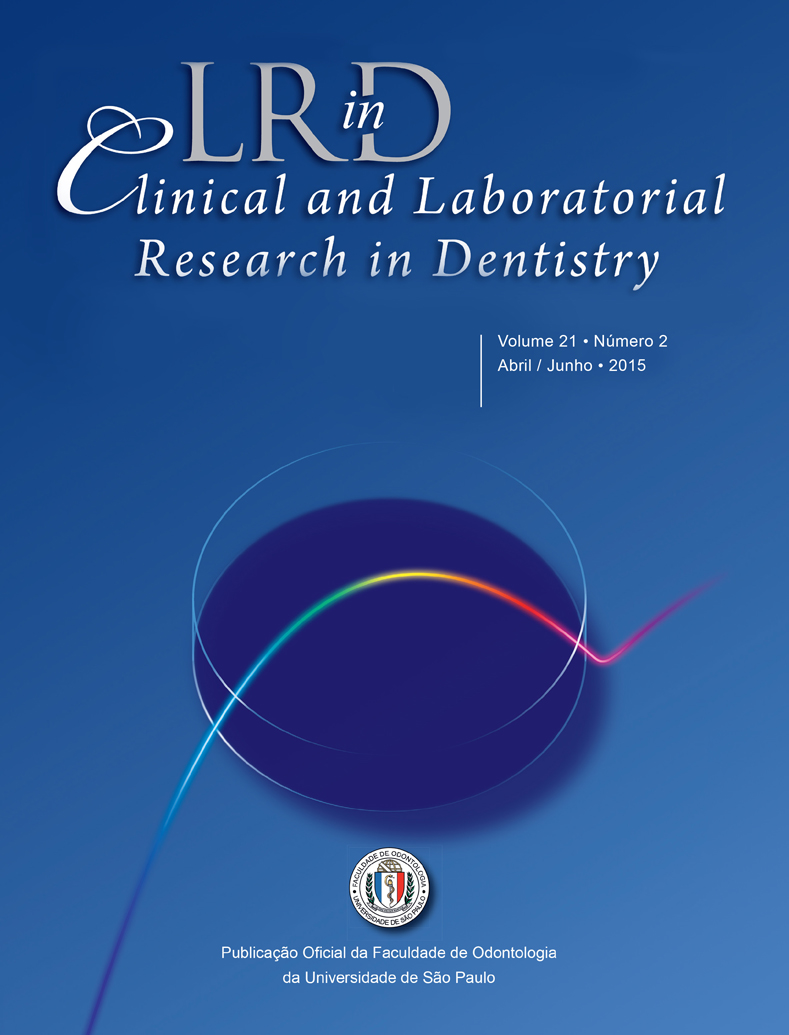Comparison of p16ink4a immunostaining in benign and malignant HPV-related lesion
DOI:
https://doi.org/10.11606/issn.2357-8041.clrd.2015.97169Keywords:
Descriptors, HPV, p16, Papilloma, Condyloma acuminate, Squamous cell carcinomaAbstract
Objective: We aim to analyze the difference between p16inka immunostaining in normal epithelium, two benign HPV-related lesions (papilloma and condyloma acuminatum) and one malignant HPV-related lesion (oropharynx carcinoma).
Methods: Five normal oral mucosas, fifteen papiloma, fifteen condyloma acuminatum and fifteen HPV-positive OSCC were included in the present study. Histological sections were stained anti-p16ink4a by immunohistochemistry. For the positive stain, score was based on a scale of - to 3+, as follows: - negative stain; 1+ less than 25% of positivity and focal distribution; 2+ 26-50% positivity and focal distribution; and 3+ 50-75% of positive cells and diffuse distribution. As for the evaluation of the intensity score was based on: - negative; 1- low intensity; 2- moderate intensity; 3- intensive.
Results: The results showed no significant differences between the scores (positive x intensity) of p16ink4a in normal epithelium, papilloma and condyloma acuminatum. All these 3 lesions showed significant differences when compared with the oropharynx squamous cell carcinoma.
Relevance: There are differences in the expression of p16ink4a between benign HPV-lesions and malignant HPV-lesions. Also, it is not possible to identify the presence of HPV by the detection of p16ink4a using IHC in benign lesions, as has been used in OSCC.
Downloads
Downloads
Published
Issue
Section
License
Authors are requested to send, together with the letter to the Editors, a term of responsibility. Thus, the works submitted for appreciation for publication must be accompanied by a document containing the signature of each of the authors, the model of which is presented as follows:
I/We, _________________________, author(s) of the work entitled_______________, now submitted for the appreciation of Clinical and Laboratorial Research in Dentistry, agree that the authors retain copyright and grant the journal right of first publication with the work simultaneously licensed under a Creative Commons Attribution License that allows others to share the work with an acknowledgement of the work's authorship and initial publication in this journal. Authors are able to enter into separate, additional contractual arrangements for the non-exclusive distribution of the journal's published version of the work (e.g., post it to an institutional repository or publish it in a book), with an acknowledgement of its initial publication in this journal. Authors are permitted and encouraged to post their work online (e.g., in institutional repositories or on their website) prior to and during the submission process, as it can lead to productive exchanges, as well as earlier and greater citation of published work (See The Effect of Open Access).
Date: ____/____/____Signature(s): _______________


